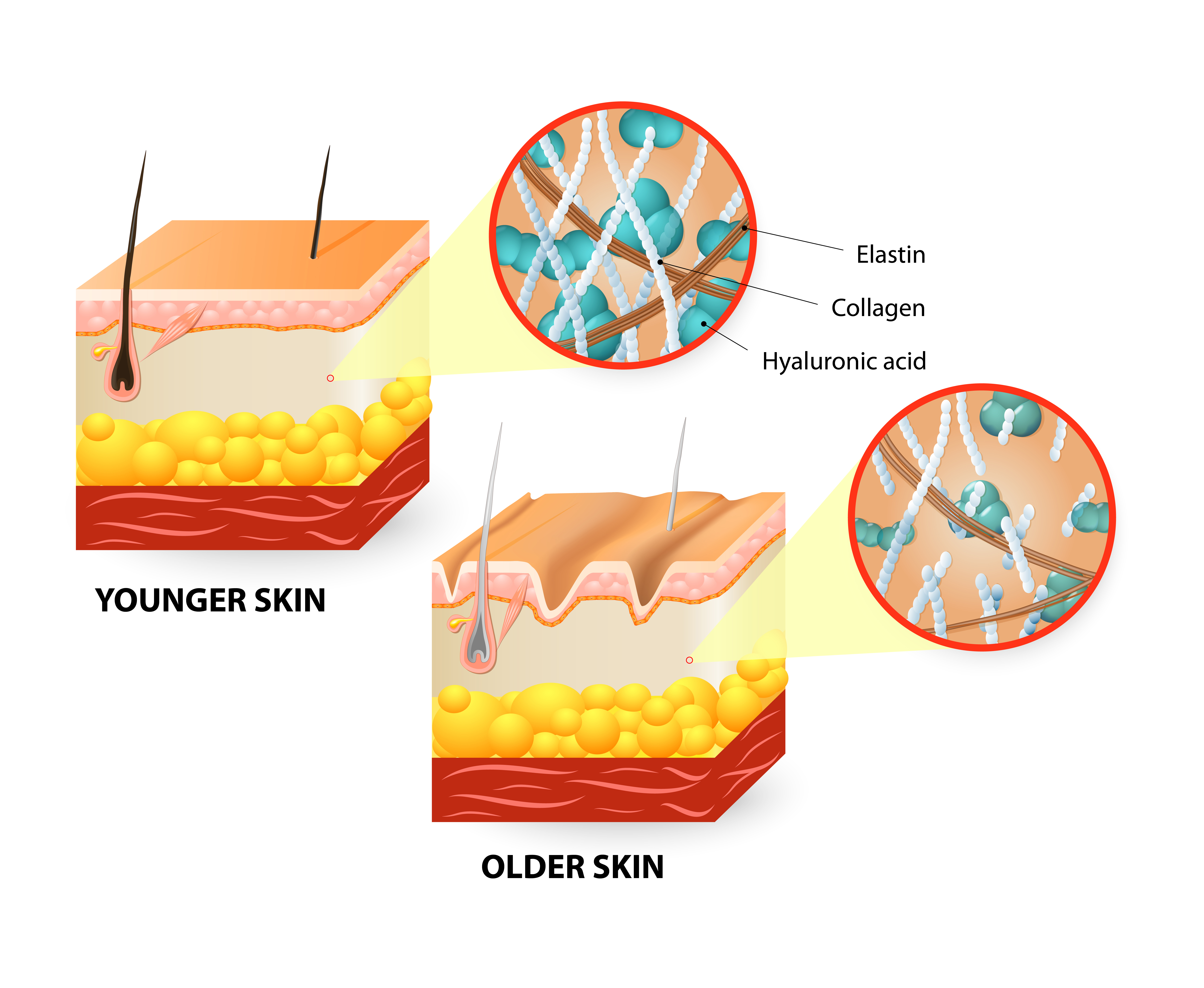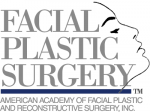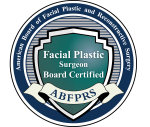The Science Behind Orange County's Best Skincare
Our skin is our largest organ and serves to protect the body from the outside environment. It has an important cosmetic role in society as a young and beautiful skin appearance has a positive influence on people’s perception and behavior. Skin aging is an inevitable physiological process that results in thin, dry skin, fine wrinkles, and gradual thinning of our dermis. This process is accelerated by external environment factors such as air pollution, smoking, poor nutrition, and sun exposure, which results in coarse wrinkles, loss of elasticity, laxity, and rough-textured appearance. However, long-term exposure to ultraviolet (UV) radiation is the biggest contributor to environmental skin aging and contributes to 80% of facial skin aging.
UV Radiation and Aging
Persistently exposing skin to UV radiation increases DNA damage and mutations and leads to premature aging and increased risk of cancer. Many studies provide consistent evidence that sunscreen use prevents DNA damage and protects the skin from squamous cell carcinoma and melanoma.
Chronic, low-grade inflammation is also recognized as a major characteristic of the aging process. UV radiation results in oxidative stress to the epidermis, which damages cells, resulting in chronic inflammation, and long term damage to the dermis. This can be prevented by antioxidants such as vitamin C and vitamin E, or antioxidative enzymes, such as coenzyme Q10. Some plants can also be used as a natural source of antioxidants, such as green tea and aloe vera.

UV Radiation Facts
UVA Radiation
- UVA accounts for up to 95 percent of the UV radiation reaching the earth.
- UVA maintains the same level of strength during daylight hours throughout the year.
- UVA rays penetrate your skin more deeply resulting in genetic damage where most skin cancers occur.
- UVA radiation is the main type of light used in most tanning beds.
- UVA leads to premature aging.
- UVA can penetrate windows and cloud cover.
UVB Radiation
- UVB intensity fluctuates when the sun’s rays are strongest. The highest risk late-morning to mid-afternoon, especially at high altitudes or on reflective surfaces like the snow.
- UVB rays can be filtered and do not penetrate glass.
- UVB penetrates and damages the outermost layers of your skin. Overexposure causes suntan, sunburn and blistering.
UV Radiation and Your Skin
Understanding the basics of UV radiation and its effect on your skin is important to safeguard yourself from skin cancer and skin aging.
UV radiation is part of the natural energy produced by the sun. UV light has shorter wavelengths than visible light, so you can’t see it.
Two types of UV light are proven to contribute to the risk for skin cancer and skin aging:
- Ultraviolet A (UVA) has a longer wavelength, and is associated with skin aging.
- Ultraviolet B (UVB) has a shorter wavelength and is associated with skin burning.
Unprotected exposure to UVA and UVB damages the DNA in the skin, producing genetic defects, and mutations, which can lead to skin cancer, skin aging, and even cataract formation. UVB radiation is a proven cause of basal cell carcinoma (BCC), squamous cell carcinoma (SCC), and melanoma (the most dangerous type of skin cancer).
Damage from UV exposure is cumulative and increases your skin cancer risk over time. The degree of damage depends on the intensity of UV rays and the length of time your skin has been exposed without protection.
Sunscreen Essentials
Regular daily use of SPF 15 sunscreen can reduce your risk of developing squamous cell carcinoma(SCC) by about 40 percent, and lower your melanoma risk by 50 percent. In addition, regular daily use of sunscreen helps prevent premature skin aging, including wrinkles, sagging, and sun spots (age spots). The best practice is to apply 30 minutes before venturing outside to allow the sunscreen to bind to your skin.
What to Look for in a Sunscreen
SPF stands for sun protection factor. The number tells you how long the sun’s UVB rays would take to redden your skin compared with the amount of time without sunscreen. For example, when using an SPF 15 product, it would take you 15 times longer to burn than if you weren’t wearing sunscreen. In Southern California our climate affords us plenty of sunlight year round. When spending time outdoors, Dr. Boeckmann recommends an SPF 30-50.
Broad spectrum. The words “broad spectrum” on a label indicate that the sunscreen contains ingredients that effectively protect against UVA and UVB rays. Chemical sunscreen ingredients (like avobenzone and octisalate) absorb UV rays before they can damage your skin.Physical sunscreen ingredients (like titanium dioxide and zinc oxide) block and scatter the rays before they penetrate your skin. Dr. Boeckmann recommends a sunscreen with a minimum of 5% titanium dioxide or zinc oxide for adequate anti aging protection.
Water resistance. While sunscreens can’t claim to be waterproof, they can be labeled water resistant for either 40 or 80 minutes
Reapply every two hours of exposure and immediately after swimming or excessive sweating.
Many people, especially females, expend a considerable amount of time and expense on cosmetics and pharmaceuticals attempting to prevent or reverse skin aging. Dr. Boeckmann has personally handpicked skin care products exclusive to physicians that correct damage to the surface of the skin, balance pigmentation, restore skin tone, and enhance production of collagen and elastin.
Retinoids (Vitamin A)
Topical vitamin A-based skin care products, called retinoids, are the most studied anti-aging compounds. These products reduce fine lines and wrinkles by increasing the production of collagen. Additional benefits include balancing complexion with reduction in discoloration and softening the texture skin. However, it takes three to six months of regular use before improvements in wrinkles are apparent and the best results take 6 to 12 months.
Tazarotene (Avage, Tazorac), and adapalene (Differin) are prescription retinoids. Adapalene is also available over the counter (in a 0.1% formulation versus the 0.3% prescription version). There are several over-the-counter products containing retinoids, such as retinol. These products are less irritating and less effective in reducing wrinkles as tretinoin, but they do improve the appearance of photo-aged skin.
Retinoids can cause skin dryness and irritation, so it is recommended to use them only every other day initially and gradually increasing to nightly use. It is important to wear a sunscreen during the day, because retinoids increase the skin's sensitivity to sunlight. These drugs must be used continually to maintain their benefits.
Hydroxy Acids
Hydroxy Acids are the second most available cosmeceutical and are classified as Alpha Hydroxy Acids (AHA) and Beta Hydroxy Acids (BHA). AHA is available in low concentrations and has been shown to enhance exfoliation to create smoother, more uniform skin texture. Many are derived from natural substances, the most common being: glycolic acid, lactic acid, citric acid, mandelic acid, malic acid, and tartaric acid.
Salicyclic Acid is the most common BHA and is commonly used for treatment of acne, due to its anti-inflammatory properties and ability to improve pore congestion.
Antioxidants
Vitamin C
Vitamin C (L-ascorbic acid) is essential for life. Vitamin C has many roles including development of collagen and is a powerful antioxidant. Studies have shown that vitamin C levels on the skin are severely depleted after UV exposure.
Vitamin C has been used effectively to stimulate collagen repair, thus diminishing some of the effects of sun damage on skin. It also brightens and balances skin complexion by blocking melanin production. However, vitamin C is easily degraded by heat and light, therefore maximum benefit requires multi-day dosing (morning and evening).
Vitamin E
Vitamin E (alpha-tocopherol) is the major antioxidant in plasma, membranes, and tissues. Vitamin E topically applied before UV irradiation has been shown to reduce redness, swelling, sunburn formation, and DNA damage.
Silicone gel sheeting
Silicone gel sheeting has been widely used for hypertrophic scars and keloids since the early 1980s. The mechanism of action of silicone gel sheeting is unknown. Temperature differences of as small as 1°C and static electricity generated by silicone gel sheeting can have a significant effect on collagen behavior to involute scars.


